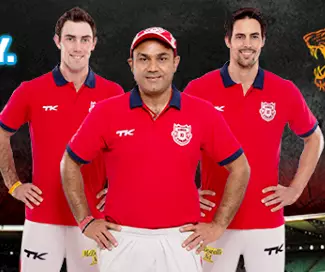All about Voter Cards and the IPL jersey - The Noel D'cunha Sunday Column
The two biggest events in India, this summer, are the Lok Sabha elections and IPL 7; and both are so dependent on print.
26 Apr 2014 | By Noel D'Cunha
India may or may not have the world's best cricket team but it's the world's most cricket-crazy nation.We invest our emotions, our passions, our frenzy, and our whole lives in following the Indian side. Brands spend a substantial part of its budget on cricket matches where India plays, because in India, cricket (and not cleanliness) is next to godliness.
 First the big news. Totally seven states have opted for four-colour voter ID cards. These are: Assam (the first to do so), Haryana, Jharkand, Orissa, Tamil Nadu, West Bengal and finally pockets of Uttar Pradesh.
First the big news. Totally seven states have opted for four-colour voter ID cards. These are: Assam (the first to do so), Haryana, Jharkand, Orissa, Tamil Nadu, West Bengal and finally pockets of Uttar Pradesh.Please nb: the notable absence of the big three. That is Gujarat, Maharashtra and Karnataka.
Needless to state, the numbers for the world's most populous (and busy) democracy are staggering. More importantly, the Election Commission (EC) has to get it right.
In April when my colleague Rahul Kumar was travelling in Western UP, he heard about the EC's bid to purchase machines to print plastic voter card (PVC), commonly known as PVC election photo identity card (PVC EPIC). One major problem with the machine is the capacity of the machine is low. Apparently, it can print only 100 cards in a day. In view of the same fact, the district administration has decided to utilise its own funds to purchase more machines for the task.
This was inevitable when one looks at the numbers for a high profile constituency like Varanasi. The EC official said to Rahul Kumar that as many as 2,04,421 forms were submitted for new registrations in the voter list during voter list revision process by first fortnight of March. Out of these 99,060 got their PVC EPICs while around 1,65,767 more people applied for voter registration by March 31 which further increased the number of pending PVC EPIC to 2,71,128, he said.
 In addition a request for PVC EPICs had been received from Lucknow head quarters but, still PVC EPIC for over 1.65 lakhs newly registered voters were "yet to be printed". Printing of such a high number of PVC EPICS before polling day would be impossible with a single machine with such low capacity.
In addition a request for PVC EPICs had been received from Lucknow head quarters but, still PVC EPIC for over 1.65 lakhs newly registered voters were "yet to be printed". Printing of such a high number of PVC EPICS before polling day would be impossible with a single machine with such low capacity.That's when you realise the prudence of the above seven states to enlist the support of print firms like M Tech, Manipal Card Technologies, VCT and Siepmann’s Card Systems to produce the voter cards. All four, are capable of producing 2.5-lakh to 5-lakh plastic cards per day, error-free. This means a total of 2.5-crore voting cards in a single election season.
When PrintWeek India spoke to the officials at the firms, they pointed out three key reasons for the high success rate. These are:
1. The press, Meteor DP8700 XL, all the above firms possess is not low tech. It has high capacity and capable of producing cards like banking, ID, loyalty and smart cards along with variable data and personalised printing. This means one set of durable voter cards per one legislative assembly constituency (LAC) can be produced in a day.
2. The press has added an advantage as we have the facility right from designing to post-finishing operations. The press is ideal for variable data and personalised printing. This is an absolute must for voter cards where the data collected by the census authorities is integrated into one piece of data along with a JPEG photograph of the voter. This single data sheet in a SQL format is received by the workstation of the press.
3. And finally, the press has the ability to print on plastic and envelope as well as paper and card is of great interest to the EC who are looking for a range of digital printing opportunities with a special Pantone colours and ten VDP elements.
The main thing which swings the voter card in its favour is cost. The above seven states that chose it paid Rs 5.50 (average) for a voter card as against Rs 12-13 of the other states.
More power to print.
Print boosts cricket
IPL action is here. The eight skippers and their eight teams are back. Zoozoos are back. Big money is back the eight skippers and the eight teams. Sharjah is back.
In a way it is befitting that King's XI Punjab has been unbeaten (so far) in the seventh season of IPL. As my colleague Tanvi Parekh informs me, "A major print firm in Punjab is producing the merchandise for the IPL. These are: TK Sports in Jalandhar who have produced material for two teams: Sunrisers Hyderabad and Kings XI Punjab. If you look carefully on your HD TV, you will spot the logo “TK” on the uniform."
So what makes TK Sports so special, I ask Tanvi Parekh?
 She shows me a quote by leg spinner and star of the India team which was a finalist of the IPL tournament. Piyush Chawla plays for the Kolkata Knight Riders and this is what he says about the team uniform, "TK provides the comfort to make you perform better on the field. It is altogether a different range of team wear done in the way we wanted. It is customisation at its best."
She shows me a quote by leg spinner and star of the India team which was a finalist of the IPL tournament. Piyush Chawla plays for the Kolkata Knight Riders and this is what he says about the team uniform, "TK provides the comfort to make you perform better on the field. It is altogether a different range of team wear done in the way we wanted. It is customisation at its best."It is this comment that made me sit up to see the IPL shirts adorned by the cricket superstars. These are printed (direct-to-garment) on the Epson Surecolor SC-F6070 and SC-F 7070 with the Epson Ultrachrome DS inks. When I spoke to the Epson team, they informed me that the technology has been "developed over a three-year period, Epson UltraChrome DS is a specially-formulated dye-sublimation ink, producing vibrant colours, intense blacks, sharp contours, and smooth gradations." The all-new ink technology, according to Epson, exhibits excellent light and wash fastness, as well as resistance to alkaline and acid perspiration.
The SC-F6070 printer allows a width of up to 44-inch and is equipped with 1.5-litre ink tank, which, Epson claims enables up to 17 hours of non-stop operation. While with the other features being alike, the SC-F 7070 can handle a width of up to 64-inch. And render high quality graphics on polyester as well as polyester blended with cotton.
 The dye-sublimation inks, suspended in a liquid solvent, give a permanency to the images and enable no dye-build up on the fabric. The four-colour Epson dye-sublimation inks used in the two F series printers, when applied to polyester fabrics, pass the requirements of Oeko-Tex Standard 100 for human ecological requirements of Class 1 products for adults, children, and babies up to 36 months. The standard belongs to the International Association for Research and Testing in the field of Textile Ecology (Oeko-Tex).
The dye-sublimation inks, suspended in a liquid solvent, give a permanency to the images and enable no dye-build up on the fabric. The four-colour Epson dye-sublimation inks used in the two F series printers, when applied to polyester fabrics, pass the requirements of Oeko-Tex Standard 100 for human ecological requirements of Class 1 products for adults, children, and babies up to 36 months. The standard belongs to the International Association for Research and Testing in the field of Textile Ecology (Oeko-Tex).There are other firms in Punjab who have been empanelled by the IPL committee but have requested not to be mentioned. In addition, there is Gurgaon-based Bakson who have a reputation to create outfits, bags and shoes with the aid of digitally printed fabric, backed by the printing software, RIPMaster.
What is common for a majority of the IPL franchise that you see on the TV is the Epson brand, with its breakthrough Micro Piezo technology.
One more feather in the cap for print.














 See All
See All